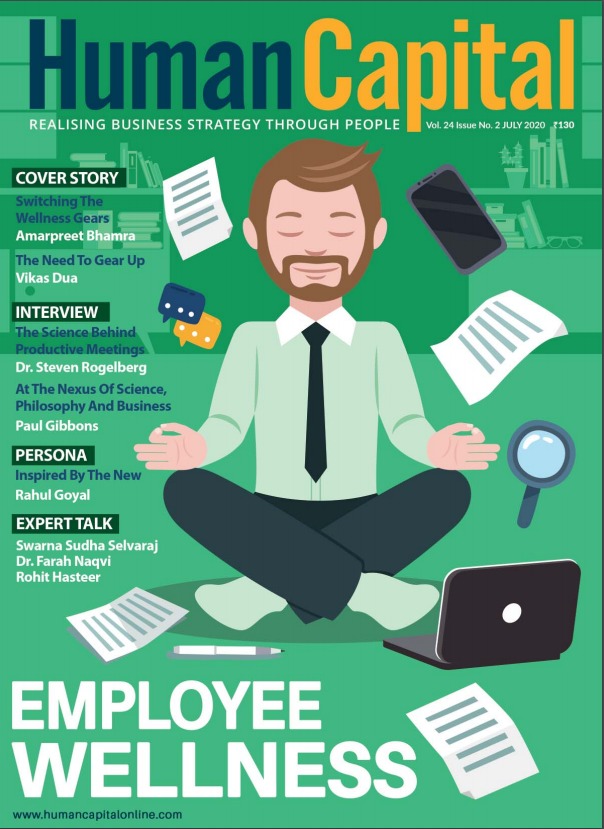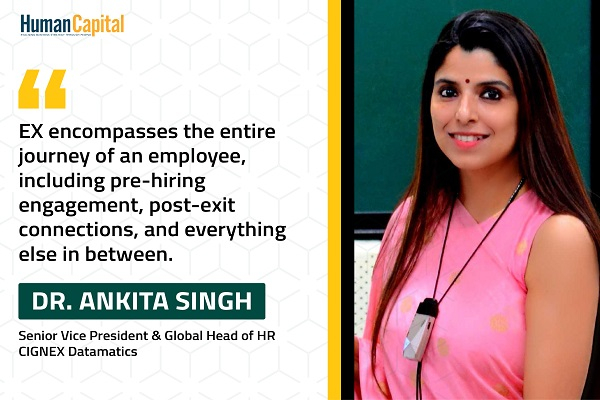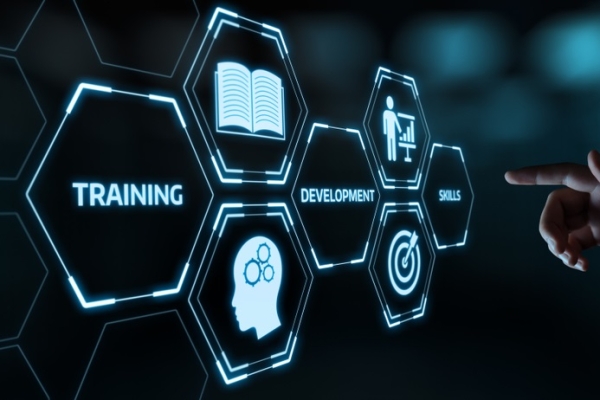Be there for your employees – listen, understand, and act. What matters to them matters most!
Customer first or employee first? It is tough to get the right answer, not because the question is debatable but because it’s often misinterpreted. Both customer and employee have their own relevant and prime place, and organisations should manage both with the utmost consideration. Compromise on any will not only shake the foundation but also break the entire business.
Many organisations have never ignored their customers’ needs, but for decades, employee experience (EX) was not a priority for most. I would not say that leaders missed it because, in a way, it didn’t exist at all. Organisations have been misinterpreting EX for ages. It’s a myth that EX is a program. It encompasses the entire journey of an employee, including pre-hiring engagement, post-exit connections, and everything else in between. All employee-related interactions and processes are sub-parts of EX. Its scope is far broader than our conventional definition.
As rightly put by Jorge Paulo Lemann, “The greatest asset of a company is its people.” Most organisations did amazingly well during the first two phases of the COVID-19 crisis. Health and safety being primary and fundamental considerations, leaders spoke about adopting a people-first approach. However, needs continued to evolve, calling for a more fluid, agile, digital, authentic, and strategic EX approach towards the changing demands of the new and the next normal.
More than ever, EX has become the most reliable competitive advantage that businesses can and should leverage. Creating meaningful experiences gives your employees a reason to choose and stay with your company. It is a collaborative process that connects employees to the organisation through communication, intent, and actions.
Leaders should consider the following to create an organisation where employees “want to” work rather than “have to” work:
• A shared responsibility: No single department can create experiences for all employees on its own. HR can primarily be an enabler, not the owner. Leaders must identify and recognise the positive influencers and stakeholders who can directly contribute to creating a great EX.
• It’s not a replacement: Don’t treat employee experience (EX) as a replacement for employee engagement (EE). EE, as Jacob Morgan puts it, is a short-term solution that creates temporary satisfaction. In contrast, EX is a long-term solution that gets to the heart of major issues that employees face. By understanding the difference and making employee engagement and experience work together, organisations can create a more motivated and productive workforce.
• Both art and science: Use the right combination of emotions, empathy, science, technology, data, and analytics to define and design the EX strategies. It is complex but decodable. Compassion and the emotional side will take care of the human aspect of the process, and data will enable leaders to navigate through unprecedented times like this pandemic. It’s essential to collect, predict, measure, and rely on data to redesign, revamp, and reset (if needed) the EX initiatives while also balancing them with soft skills.
• By design, not default: The best EX strategy adopted by the best company in the world may not fetch a positive result for your organisation as people, culture, needs, workforce composition, and location vary. It is critical to first define the requirement, capability, and purpose of the organisation. Apprehending trends is one thing, but blindly following them all can be a catastrophe for your organisation. Understand who you are and what you need.
• Stay authentic: Accept that not every experience will be positive. There will be areas where the organisation does not have complete control; something may slip through the cracks, resulting in a major miss. Creating a great EX is more about how organisations manage, handle, and react to the situation and their employees than what can go wrong.
• A lifetime project: EX has a much stronger emotional aspect than most other initiatives. Therefore, employee experience should be considered a business initiative/ project with cross-functional involvement, responsibility, and collaboration among critical stakeholders. The strategy should be co-owned as a SMART (specific, measurable, achievable, realistic and timely) project.
• Be realistic and experiment: Not every experience you create will be successful. Don’t let failure deter you from achieving your ultimate goal. Everything around is changing dramatically, necessitating the need to experiment, explore, and strategise the best solution. Every miss can be an opportunity to figure out what went wrong and how we can make it right. When you get stuck, pause, analyse and try again.
• Personalise: Capitalise on technology to meet individual needs. It’s wrong to expect the workforce to adapt to broadbrush initiatives because everyone has their own perspective and approach. On average, only 53% of employees globally report feeling engaged at work. Organisations must respect and consider the diversity and uniqueness of their workforce.
• Create a mix, not confusion: Little done correctly is far more palpable than a lot done in a directionless fashion. Before launching an EX strategy, the organisation’s purpose must be defined and communicated. Don’t run after creating a dream experience right away; it won’t always be possible.
• Virtual is the new reality: The days of experience and engagement as a face-to-face process are gone. Leaders must embrace technology to the core and revolutionise their EX strategies. As per a report, 90% of employees are more productive with gamification, with 72% saying it inspires them to work harder and 95% reporting they enjoy it[2]. We live in a technologycentred world, and the future will see even more technological advancements. Many employees will continue to work from behind a computer screen, and the physical workplace will remain undefined.
• Take feedback: Organisations may offer the best of the best, but what if that isn’t what the majority of their employees need? Even if organisations are doing great, far outperforming their peers, they should always ask about and solicit feedback on their initiatives from employees directly to obtain a complete and accurate picture. People report feeling more engaged at work when asked for feedback than those who aren’t[1]. If the process is ineffective and unappreciated by those who use it, organisations should be receptive and willing to change it.
Conclusion
We may not have the best solution or initiatives in place to meet all of the defined needs. It’s natural and okay not to be a perfect employer all the time; no one can be. EX is more than just providing perfect solutions; it is the intention and willingness to put employees first.
As Jimmy Dean rightly stated: I can’t change the direction of the wind, but I can adjust my sails always to reach my destination. Likewise, there will always be challenges and changes in creating the right employee experience, and organisations may have some or no control over the factors influencing it. To sail through, organisations should prioritise investing in people and taking care of the things they can control to build more purposeful and lasting emotional connections.
Be there for your employees – listen, understand, and act. What matters to them matters most!
References:
[1] 2020 Global Employee Experience Trends // Qualtrics research study. Qualtrics. (2020).
[2] Anadea. (2018). How gamification in the workplace impacts employee productivity.
Do you look forward to permanently working from home after the pandemic subsides?
Trending
-
SBI General Insurance Launches Digital Health Campaign
-
CredR Rolls Out 'Life Happens' Leave For Its Employees
-
Meesho Announces 30-Week Gender-Neutral Parental Leave Policy
-
Microsoft Unveils Tech Resilience Curriculum To Foster An Inclusive Future
-
60% Indian Professionals Looking For Job Change Due To COVID: Survey
-
SpringPeople And Siemens Collaborate For Digital Transformation Push
-
86% Professionals Believe Hybrid Work Is Essential For Work Life Balance: Report
-
Almost 1 In Every 3 People's Personal Life Affected Due To Work Stress
-
Meesho Rolls Out Reset And Recharge Policy For Employees
-
80% Of Talent Leaders & Academics Say Pandemic Changed Skill Needs For Youth: Report
-
Hero Electric Rolls Out 'Hero Care' Program For Employees
-
Human Capital In Collaboration With ASSOCHAM Hosts Virtual Conference
-
IKEA India, Tata STRIVE Collaborate To Create Employability And Entrepreneurship Opportunities
-
SAP India, Microsoft Launch Tech Skilling Program for Young Women
-
DXC Technology, NASSCOM Collaborate For Employability Skills Program
-
Lenskart To Hire Over 2000 Employees Across India By 2022
-
Mindtree Launches Learn-and-Earn Program
-
Tata AIA Extends 'Raksha Ka Teeka' To Its Employees
-
Swadesh Behera Is The New CPO Of Titan
-
NetConnect Global Plans To Recruit 5000 Tech Professionals In India
-
Hubhopper Plans To Hire 60% Of Indian Podcasters By 2022
-
Corporate India Needs More Women In Leadership Roles: Report
-
Aon to Invest $30 Million and Create 10,000 Apprenticeships by 2030
-
Tech Mahindra Launches ‘Gift a Career’ Initiative for Upskilling of Youth
-
40% Women Prefer Flexible Working Options in Post-COVID World: Survey
-
3 out of 4 companies believe they can effectively hire employees virtually: Report
-
Vodafone , CGI and NASSCOM Foundation launch digital skills platform
-
Odisha: Bank, postal employees to deliver cash for elderly, differently-abled persons
-
Skill India launches AI-based digital platform for "Skilled Workforce"
-
Hiring activity declines 6.73% in first quarter: Survey
-
70% startups impacted by COVID-19 pandemic
-
Bajaj Allianz Life ropes in Santanu Banerjee as CHRO
-
Over 70 Percent MSMEs look at cutting jobs to sustain businesses
-
93 Per Cent employees stressed about returning to office post-lockdown
-
Johnson & Johnson India announces family benefits for same gender partners
-
Indian firms turning friendly towards working mothers
-
Welspun India names Rajendra Mehta as new CHRO
-
Wipro partners with NASSCOM to launch Future Skills platform



Human Capital is niche media organisation for HR and Corporate. Our aim is to create an outstanding user experience for all our clients, readers, employers and employees through inspiring, industry-leading content pieces in the form of case studies, analysis, expert reports, authored articles and blogs. We cover topics such as talent acquisition, learning and development, diversity and inclusion, leadership, compensation, recruitment and many more.
Subscribe Now












































Comment